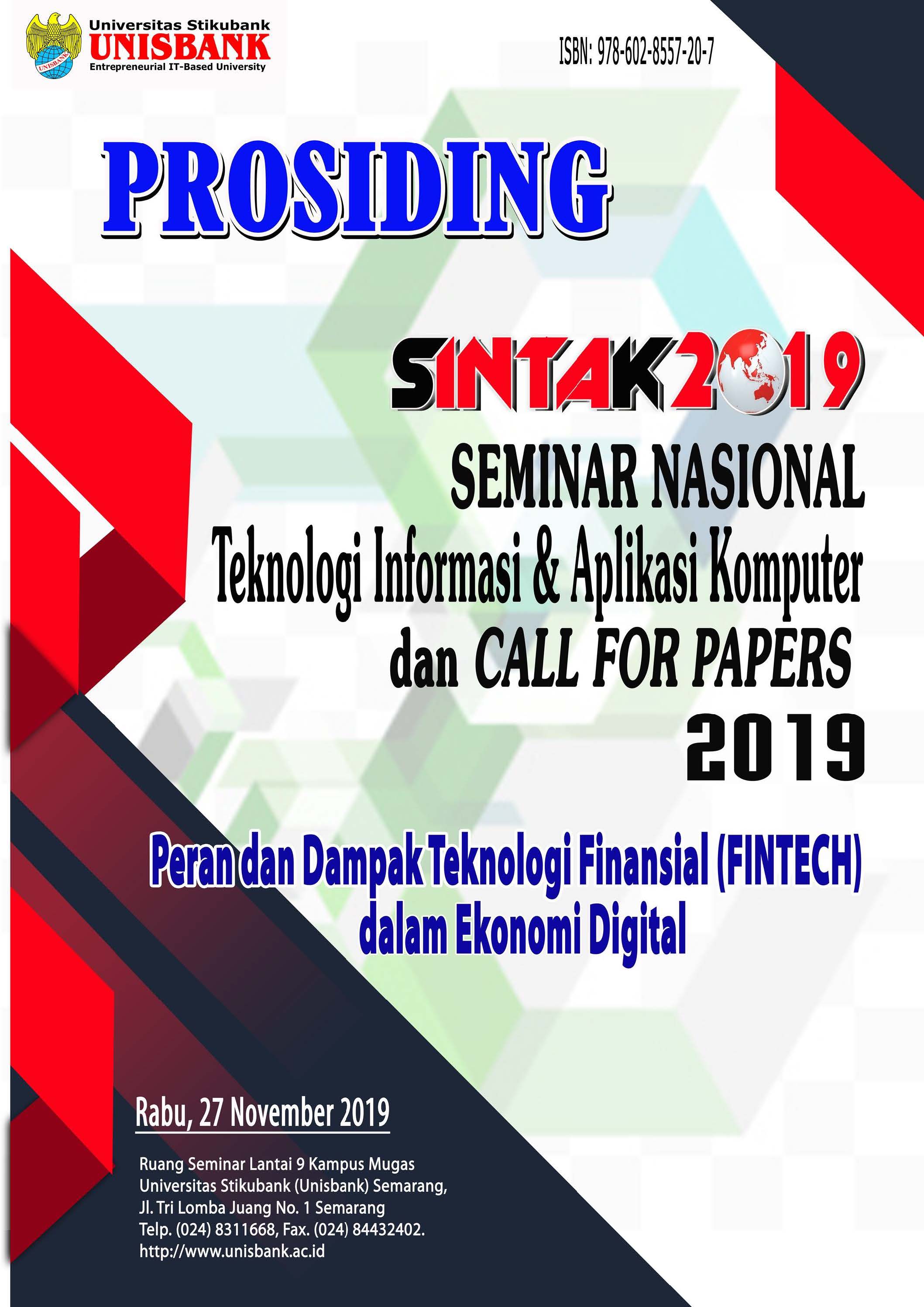STUDI LITERATUR PENGUJIAN PERANGKAT LUNAK
Abstract
Software testing atau pengujian perangkat lunak dirasa sangat penting,karena sudah banyak pihak yang mengesampingkan kegiatan ini. Ditambah lagi dengan besarnya jumlah pengguna yang mengakses aplikasi dan menggunakan aplikasi tersebut untuk memudahkan pekerjaan mereka sehari-hari. Proses pengujian ini juga bertujuan untuk memastikan kualitas dan keandalan aplikasi tersebut. Dari masalah tersebut, maka dibutuhkan metode pengujian yang tepat untuk menguji aplikasi. Ada beberapa metode untuk melakukan pengujian diantaranya seperti metamorphic testing, random testing, adaptive random testing, state based testing, random sequence based testing. Masing-masing metode ini menjelaskan pengertian dan kegunaannya.
Hasil dari penelitian didapat bahwa metode metamorphic testing dianggap paling valid dalam menemukan kesalahan untuk menguji API dan bahasa yang paling banyak digunakan untuk pengujian API adalah JSON dan JAVA, tetapi jika kasus uji berupa object oriented programming metode adaptive random sequence lebih disarankan karena metode ini lebih menekankan pada pengelompokan agar hasil yang didapat lebih detail dan akurat.
References
[2] K. Sneha and G. M. Malle, “Research on software testing techniques and software automation testing tools,” 2017 Int. Conf. Energy, Commun. Data Anal. Soft Comput. ICECDS 2017, pp. 77–81, 2018.
[3] S. Segura, G. Fraser, A. Sanchez, and A. Ruiz-Cortés, “A Survey on Metamorphic Testing,” IEEE Trans. Softw. Eng., vol. 42, no. 9, pp. 805–824, 2016.
[4] J. Chen et al., “Test case prioritization for object-oriented software: An adaptive random sequence approach based on clustering,” J. Syst. Softw., vol. 135, no. 2018, pp. 107–125, 2018.
[5] D. Petrova-Antonova, K. Kuncheva, and S. Ilieva, “Automatic Generation of Test Data for XML Schema-based Testing of Web Services,” pp. 277–284, 2015.
[6] J. Liu and W. Chen, “Optimized Test Data Generation for RESTful Web Service,” Proc. - Asia-Pacific Softw. Eng. Conf. APSEC, vol. 2017-Decem, pp. 683–688, 2018.
[7] W. Hu, Y. Huang, X. Liu, and C. Xu, “Study on REST API Test Model Supporting Web Service Integration,” Proc. - 3rd IEEE Int. Conf. Big Data Secur. Cloud, BigDataSecurity 2017, 3rd IEEE Int. Conf. High Perform. Smart Comput. HPSC 2017 2nd IEEE Int. Conf. Intell. Data Secur., pp. 133–138, 2017.
[8] D. Petrova-Antonova, S. Ilieva, and D. Manova, “TASSA: Testing Framework for Web Service Orchestrations,” Proc. - 10th Int. Work. Autom. Softw. Test, AST 2015, pp. 8–12, 2015.
[9] J. Wang, X. Bai, L. Li, Z. Ji, and H. Ma, “A Model-Based Framework for Cloud API Testing,” Proc. - Int. Comput. Softw. Appl. Conf., vol. 2, pp. 60–65, 2017.
[10] M. Srinivasan, M. P. Shahri, U. Kanewala, and I. Kahanda, “Quality Assurance of Bioinformatics Software: A Case Study of Testing a Biomedical Text Processing Tool Using Metamorphic Testing,” 2018 IEEE/ACM 3rd Int. Work. Metamorph. Test., pp. 26–33, 2018.
[11] M. Troup, A. Yang, A. H. Kamali, E. Giannoulatou, T. Y. Chen, and J. W. K. Ho, “A cloud-based framework for applying metamorphic testing to a bioinformatics pipeline,” 2016 IEEE/ACM 1st Int. Work. Metamorph. Test., pp. 33–36, 2016.
[12] Z. W. Hui, S. Huang, T. Y. Chen, M. F. Lau, and S. Ng, “Identifying failed test cases through metamorphic testing,” Proc. - 2017 IEEE 28th Int. Symp. Softw. Reliab. Eng. Work. ISSREW 2017, pp. 90–91, 2017.
[13] J. Brown, Z. Q. Zhou, and Y.-W. Chow, “Metamorphic Testing of Navigation Software: A Pilot Study with Google Maps,” Proc. 51st Hawaii Int. Conf. Syst. Sci., vol. 9, 2018.
[14] A. C. Barus, T. Y. Chen, F.-C. Kuo, H. Liu, and H. W. Schmidt, “The impact of source test case selection on the effectiveness of metamorphic testing,” pp. 5–11, 2016.
[15] E. Nikravan, F. Feyzi, and S. Parsa, “Enhancing path-oriented test data generation using adaptive random testing techniques,” Conf. Proc. 2015 2nd Int. Conf. Knowledge-Based Eng. Innov. KBEI 2015, pp. 510–513, 2016.
[16] S. Segura, J. A. Parejo, J. Troya, and A. Ruiz-Cortes, “Metamorphic testing of RESTful Web APIs,” IEEE Trans. Softw. Eng., vol. 44, no. 11, pp. 1083–1099, 2018.
[17] Y. Qi, Z. Wang, and Y. Yao, “Influence of the Distance Calculation Error on the Performance of Adaptive Random Testing,” Proc. - 2017 IEEE Int. Conf. Softw. Qual. Reliab. Secur. Companion, QRS-C 2017, pp. 316–319, 2017.
[18] K. K. Sabor and S. Thiel, “Adaptive Random Testing by Static Partitioning,” Proc. - 10th Int. Work. Autom. Softw. Test, AST 2015, pp. 28–32, 2015.
[19] J. Chen, F. C. Kuo, T. Y. Chen, D. Towey, C. Su, and R. Huang, “A similarity metric for the inputs of OO programs and its application in adaptive random testing,” IEEE Trans. Reliab., vol. 66, no. 2, pp. 373–402, 2017.
[20] S. Jatmika and E. Pramana, “Pemanfaatan Mirror Adaptive Random Testing Untuk Uji Coba Software,” 2015.
[21] C. D. Turner, “State-based testing - a new method for testing object-oriented programs,” 1994.
[22] P.-N. Tan, M. Steinbach, and V. Kumar, Introduction of Data Mining. Boston: Pearson Education, 2006.
[23] E. Prasetyo, Data Mining Konsep dan Aplikasi Menggunakan Matlab. Yogyakarta: Andi, 2012.
[24] P. Saha and U. Kanewala, “Fault detection effectiveness of source test case generation strategies for

